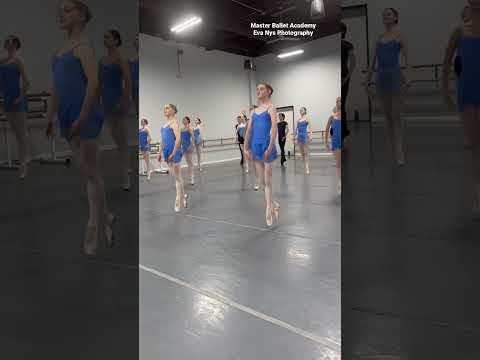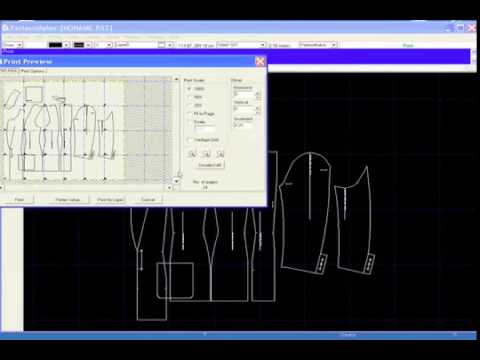Ballet Master Job: Duties & Salary
Ballet Master Job Description: A Ballet Master is a highly skilled and experienced professional who plays a vital role in the production and artistic development of a ballet company. They are responsible for creating and teaching choreography, coaching dancers, and ensuring the overall quality of performances. Ballet Masters work closely with the artistic director to interpret and bring the vision of the ballet to life. They conduct rehearsals, provide guidance and feedback to dancers, and collaborate with other members of the production team to ensure seamless execution of the ballet. Additionally, Ballet Masters may assist in casting decisions, costume design, and overall artistic planning. They possess a deep knowledge of ballet techniques, history, and repertoire, and are able to effectively communicate and inspire dancers to deliver exceptional performances.
Ballet Master Salary: The salary of a Ballet Master varies depending on factors such as the size and prestige of the ballet company, location, and the Ballet Master’s level of experience and reputation. On average, a Ballet Master can earn between $40,000 to $100,000 per year. However, top-tier Ballet Masters working with renowned companies can earn significantly higher salaries, sometimes exceeding $150,000 per year. In addition to the base salary, Ballet Masters may receive benefits such as health insurance, retirement plans, and paid vacation. It is important to note that salaries can also be influenced by the specific responsibilities and duties assigned to the Ballet Master within the company. Overall, the salary for a Ballet Master reflects their expertise, dedication, and contribution to the artistic success of the ballet company.

Ballet Master Job Description Template
Ballet Master Job Description
A ballet master is a highly skilled and experienced professional who plays a crucial role in the development and execution of ballet performances. They possess an exceptional understanding of ballet techniques, choreography, and the ability to effectively communicate and train dancers. Ballet masters work closely with choreographers, artistic directors, and dancers to ensure that performances are of the highest artistic standard.
One of the key responsibilities of a ballet master is to teach and coach dancers in ballet techniques and choreography. They conduct rigorous training sessions, rehearsals, and provide individualized feedback to help dancers improve their skills and performance quality. Ballet masters also collaborate with choreographers to develop and adapt choreography for specific productions.
Another important aspect of a ballet master’s role is to oversee the staging and execution of ballet performances. They work closely with technical staff, costume designers, and lighting designers to ensure that the artistic vision of the production is realized on stage. Ballet masters also have a keen eye for detail and precision, ensuring that every movement and positioning is executed flawlessly.
Attention to Detail is an essential quality for a ballet master as they are responsible for ensuring that every aspect of a performance is executed with precision. From the dancers’ technique to the placement of props, a ballet master must have a meticulous eye for detail to create a visually stunning production.
Effective Communication is another vital skill for a ballet master. They must be able to effectively communicate with dancers, choreographers, and other artistic professionals to ensure that the vision for a production is understood and executed. Clear instruction and feedback are crucial in helping dancers develop their skills and bring the choreography to life on stage.
Ballet Master Responsibilities
Ballet Master Requirements
How Much Does A Ballet Master Make?
Ballet Master Salary
| Country | Average Salary |
|---|---|
| United States | $60,000 – $80,000 per year |
| United Kingdom | £30,000 – £50,000 per year |
| Australia | AU$70,000 – AU$90,000 per year |
| Canada | C$50,000 – C$70,000 per year |
| Germany | €40,000 – €60,000 per year |
A ballet master, also known as a ballet instructor or coach, is responsible for teaching and guiding dancers in a ballet company. They play a crucial role in the artistic development and training of dancers. The salary of a ballet master varies depending on factors such as experience, location, and the size of the ballet company.
In the United States, the average annual salary for a ballet master ranges from $60,000 to $80,000. In the United Kingdom, the average salary is between £30,000 and £50,000 per year. In Australia, ballet masters earn an average of AU$70,000 to AU$90,000 annually. In Canada, the salary ranges from C$50,000 to C$70,000 per year. In Germany, ballet masters earn an average of €40,000 to €60,000 per year.
It’s important to note that these salary figures are approximate and can vary depending on factors such as the dancer’s level of expertise, the reputation of the ballet company, and the cost of living in a specific location.
Ballet Master Salaries by Country
Top Paying Countries for Ballet Master
| Country | Average Salary (USD) |
|---|---|
| United States | 100,000 |
| Switzerland | 95,000 |
| Australia | 90,000 |
| Germany | 85,000 |
| Canada | 80,000 |
A ballet master is responsible for overseeing the training and artistic development of ballet dancers. The salary of a ballet master can vary greatly depending on the country they work in. According to available data, the top paying countries for ballet masters are the United States, Switzerland, Australia, Germany, and Canada. In the United States, ballet masters can earn an average salary of $100,000 per year, making it the highest paying country for this position. It is important to note that these salaries can also vary within each country based on factors such as experience, reputation, and the specific ballet company or institution they work for.
A video on the topic Ballet Master
Interview Questions for Ballet Master
1. What is the role of a Ballet Master?
A Ballet Master is responsible for teaching and coaching dancers, overseeing rehearsals, and ensuring the artistic integrity of ballet productions.
2. What qualifications are required to become a Ballet Master?
To become a Ballet Master, one must have extensive training and experience as a professional ballet dancer. They should also possess strong teaching and coaching skills, as well as a deep understanding of ballet technique and repertoire.
3. How do you prepare dancers for performances?
I prepare dancers for performances by conducting rehearsals, providing corrections and guidance on technique and artistry, and ensuring that the choreography is executed correctly. I also work closely with other artistic staff, such as choreographers and costume designers, to ensure a cohesive and polished production.
4. How do you handle difficult or challenging dancers?
When dealing with difficult or challenging dancers, I believe in open communication and fostering a positive and respectful environment. I address any issues or concerns directly with the dancer and provide constructive feedback and support to help them improve.
5. How do you stay updated on current ballet trends and techniques?
To stay updated on current ballet trends and techniques, I attend workshops, conferences, and performances by renowned ballet companies. I also stay connected with the ballet community through networking and collaborating with other ballet professionals.
6. How do you ensure the safety of dancers during rehearsals and performances?
I prioritize the safety of dancers by ensuring that the rehearsal space is free from any hazards, providing proper warm-up and cool-down exercises, and monitoring the dancers’ physical well-being. I also communicate with the production team to address any technical or staging issues that may pose a risk to the dancers.
7. How do you handle conflicts or disagreements within the dance company?
When conflicts or disagreements arise within the dance company, I believe in promoting open dialogue and finding a resolution that benefits the entire team. I encourage dancers to express their concerns and opinions respectfully, and I mediate discussions to facilitate a positive and collaborative working environment.
8. How do you balance artistic vision with the capabilities of the dancers?
Balancing artistic vision with the capabilities of the dancers requires a deep understanding of their strengths and limitations. I work closely with each dancer to develop their skills and push their boundaries while ensuring that the choreography is within their technical capabilities. I aim to create a challenging yet achievable artistic vision for the dancers.
9. How do you handle the pressure of working with high-profile productions?
Working with high-profile productions can be challenging, but I thrive under pressure. I stay organized, maintain clear communication with the production team, and focus on the artistic goals of the production. I also rely on my experience and expertise to guide the dancers and ensure a successful performance.
10. What do you enjoy most about being a Ballet Master?
What I enjoy most about being a Ballet Master is the opportunity to inspire and mentor dancers. Seeing them grow and develop their skills, witnessing their passion and dedication, and being a part of their artistic journey is incredibly rewarding. I also love the collaborative nature of ballet and working with a team to create beautiful and captivating performances.






